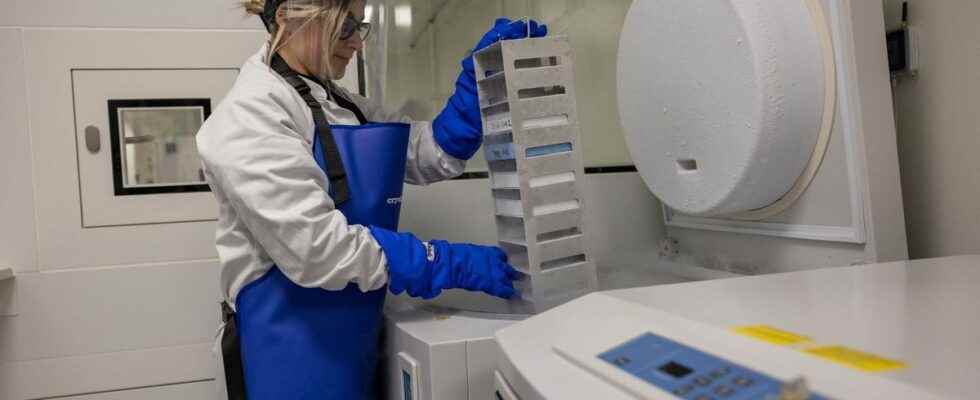Published on
Updated
Reading 2 mins.
There are the plasters for everyday ailments. And dressings for the healing of severe wounds. Next to Dijon, researchers are trying to develop “the ultimate dressing”: artificial skin for severe burns.
For 18 months, a team from the laboratory of the French group Urgo has been working on the creation of an artificial skin, to allow the healing of the wounds of severe burns, without going through the many and painful skin grafts that they must undergo today. . This is the “Genesis” project, in Chenôve (Côte-d’Or).
“The dressing has become intelligent”
Many health players, public and private, including an AFM-Téléthon laboratory, are taking part in this 100 million euro project. With the aim of achieving it in 2030.
The technological step to be taken is high. “You have to be able to recreate all the features of the skin“, including protection against external threats or thermoregulation, explains Guirec Le Lous, president of the medical branch of Urgo, a family business created in 1880.
In the laboratory, living cells are kept cold before being cultured. “Are we able to design artificial skin in the laboratory? No one today in the world has succeeded“, underlines the leader, without revealing anything about the technology used or the type of cells used.
We must also take into account the industrial aspect, because this skin must be “available to everyone and therefore at the right price“, he adds. It’s a “crazy” project, he says.
Urgo has a long experience with chronic wounds, for example for diabetic feet or leg ulcers. And “since the 2000s, we have been working on materials that will correct healing defects: the dressing has become intelligent, interactive with the wound, which allows it to perform“, says Laurent Apert, director of research for Urgo, evoking “a revolution”.
More and more innovative technologies
A revolution carried out in the research laboratories of several companies. Thus, the start-up VistaCare Medical, in Besançon (Doubs), launched in 2015, with a device that looks like a mini box placed around the lower limb, without contact with the wound.
Healing goes through several phases: humidity, temperature, and everything is important in this process. “There is no more bandage. The idea is to put the wound in an enclosure, in sterile air“, details the founder, François Dufaÿ. “With this system, we provide the wound with what it needs, at the right time.“.
Today, its solution equips around twenty hospitals. The entrepreneur intends to file an authorization request in the United States in 2023, for a device which this time would be used at home.
Healing, long neglected in research, is of increasing interest also abroad. The University of South Australia, for example, has developed a technology for burns in children: these are dressings containing silver nanoparticles, sensitive in particular to temperature changes, which limit the risk of wound infection. .
In Paris, Isabelle Fromantin, in charge of the wounds and healing research unit at the Institut Curie, worked with her team on an anti-odor dressing for necrotic wounds in certain cancers.
“Compared to 20 years ago, it’s day and night in terms of wound care“, she notes.
But technologies cannot do everything. “Believing that a bandage will allow healing on its own is a utopia“, says the researcher. Because the process varies from person to person, depending on age and state of health.
